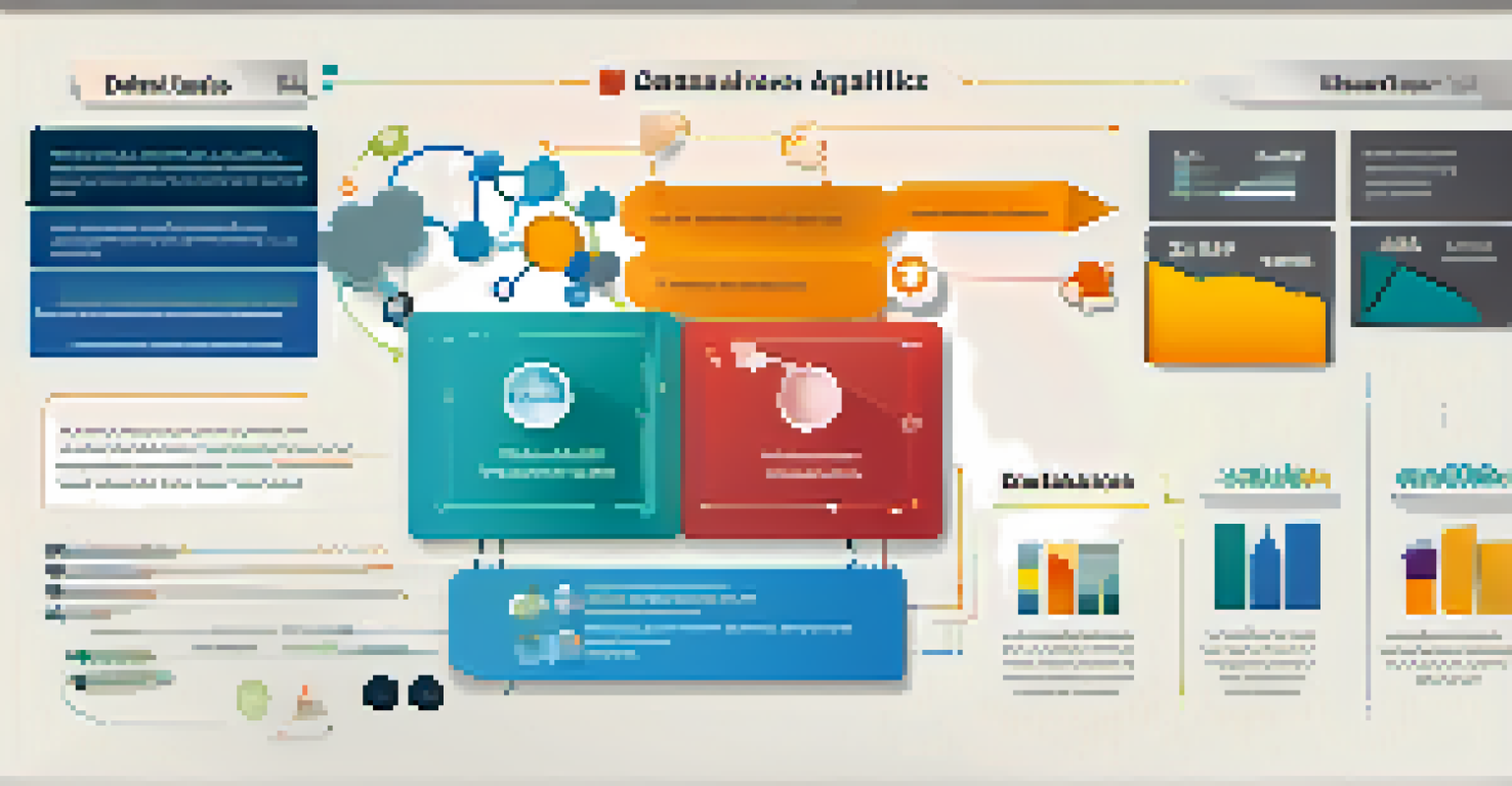Learning Analytics: Transforming Data into Insights

Understanding Learning Analytics and Its Importance
Learning analytics refers to the collection, analysis, and interpretation of data related to learners and their learning environments. This emerging field aims to improve educational outcomes by leveraging data insights. By understanding how students engage with content, educators can tailor their approaches to meet individual needs.
Data is the new oil. It’s valuable, but if unrefined it cannot really be used.
The importance of learning analytics cannot be overstated. It allows educational institutions to identify trends, track student progress, and predict potential challenges. This proactive approach not only enhances learning experiences but also supports educators in making data-driven decisions.
In a world where education is increasingly personalized, learning analytics serves as a vital tool. It helps bridge the gap between traditional teaching methods and the diverse needs of modern learners. Ultimately, the goal is to create an adaptive learning environment that fosters success for everyone.
Key Components of Learning Analytics Explained
There are several key components that make up learning analytics, including data collection, analysis, and visualization. Data collection involves gathering information from various sources such as learning management systems (LMS), assessments, and student interactions. This foundational step is crucial for generating meaningful insights.

Once data is collected, analysis comes into play. This process involves examining the data to identify patterns and trends that can inform educational strategies. For instance, educators might discover that students struggle with specific topics, prompting them to adjust their teaching methods accordingly.
Learning Analytics Enhances Education
Learning analytics enables educators to tailor their teaching strategies based on data insights, improving student engagement and outcomes.
Finally, visualization is about presenting data in a clear and engaging manner. Tools like dashboards and graphs can help educators quickly grasp complex information, making it easier to communicate insights to stakeholders. Together, these components create a comprehensive learning analytics framework that drives improvement.
How Learning Analytics Benefits Educators and Students
Learning analytics offers numerous benefits for both educators and students. For educators, it provides valuable insights into student performance, enabling them to identify areas where students may need additional support. This targeted approach allows teachers to intervene early, helping students stay on track.
The goal is to turn data into information, and information into insight.
For students, learning analytics can enhance their educational experience by providing personalized feedback. By understanding their strengths and weaknesses, students can take ownership of their learning journey. This empowerment can lead to increased motivation and better academic outcomes.
Moreover, the collaborative potential of learning analytics fosters a community of continuous improvement. When educators share insights and strategies based on data, they contribute to a culture of learning that benefits everyone. It's a win-win situation that elevates the entire educational experience.
Challenges in Implementing Learning Analytics
While the benefits of learning analytics are clear, implementation can come with its challenges. One major hurdle is the collection and integration of data from various sources. Many educational institutions use different systems, making it difficult to create a cohesive data set for analysis.
Another challenge is ensuring data privacy and security. With increased data collection comes the responsibility to protect sensitive information. Educators and administrators must navigate the fine line between utilizing data for improvement and safeguarding student information.
Data-Driven Decisions for Success
By analyzing student performance data, educators can identify challenges and intervene early, fostering a proactive approach to learning.
Lastly, there's the issue of professional development. Educators need training to effectively use learning analytics tools and interpret the data they provide. Without proper support, the potential of learning analytics may remain untapped, leaving educators frustrated and students underserved.
Successful Case Studies in Learning Analytics
Many institutions have successfully harnessed the power of learning analytics to enhance their educational practices. For instance, a university implemented a predictive analytics model to identify at-risk students. By providing tailored support, they significantly improved retention rates and overall student success.
Another example comes from a K-12 school that utilized learning analytics to personalize learning experiences. Teachers tracked student progress in real-time, allowing them to adjust lesson plans and provide differentiated instruction. This approach led to a notable increase in student engagement and achievement.
These success stories illustrate the transformative potential of learning analytics. By adopting data-driven strategies, educational institutions can create environments that support all learners, proving that when data meets education, great things happen.
Future Trends in Learning Analytics
As technology continues to evolve, so too does the field of learning analytics. One emerging trend is the integration of artificial intelligence (AI) to enhance data analysis. AI can help identify complex patterns that may not be immediately apparent, offering deeper insights into student behavior and performance.
Another trend is the growing emphasis on learner agency. As students become more involved in their learning processes, analytics tools will increasingly focus on empowering them with actionable insights. This shift will enable students to take charge of their educational journeys, fostering a sense of ownership and accountability.
Collaboration Fuels Continuous Improvement
Sharing insights and strategies derived from learning analytics encourages a culture of collaboration among educators, benefiting the entire learning community.
Finally, we can expect to see a rise in collaborative learning analytics platforms. These tools will allow educators to share insights and best practices across institutions, creating a community of shared knowledge. The future of learning analytics is bright, promising a more personalized and effective educational landscape.
Getting Started with Learning Analytics
For educators and institutions looking to dive into learning analytics, starting small is key. Begin by identifying specific goals and the data needed to achieve them. Whether it's improving student engagement or enhancing curriculum effectiveness, having a clear focus will guide your efforts.
Next, invest in the right tools and technologies. There are numerous learning analytics platforms available that can help streamline data collection and analysis. Choose a solution that aligns with your institution's needs and provides user-friendly features to make the process accessible.

Finally, foster a culture of collaboration and continuous learning. Encourage educators to share their experiences and insights gained from analytics. By working together, institutions can create a vibrant learning community that leverages data to drive positive change.